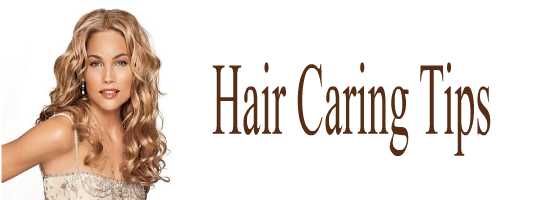Hair drying through rough rubbing with a towel when the hair is wet can cause damage, especially if it is already fragile.Here are ten important hair drying tips to ensure your hair is kept in good condition despite the toll everyday wear and tear can have:Some hair experts recommend that you separate hair into only 3-4 major sections. Others recommend a lot of little sections that are only 2-4 inches in width.Consumers who blow dry at home need to understand that a perfect blow out, whether for a straight, curly or wavy look, takes time. Whether you're using a paddle brush to achieve stick straight hair or a long finger diffuser attachment to encourage curls and waves, Barbara advises that you go very slowly and focus on each individual section of hair before moving to the next one.
Hair Drying Tip:
1. While this may not be possible for everyone, especially if there is a rush to get out in the morning, allowing the hair to dry naturally is the best hair drying method you can adopt. This helps the hair retain moisture and allow it to curl naturally if that is its characteristic or make long straight hair sleek.
2. If your hair is curly, short or spiky, use your fingers to dry the hair which will help the hair stand up more than using a comb or brush.
3. Do not vigorously rub wet hair with a towel. Use a dabbing or patting action to absorb most of the moisture.
Using A Blow Dryer
4. Invest in a good quality hair dryer that has high power but a lightweight design. You will find it much easier to hold the hair dryer above your head for longer periods. Although you may not use the high power extensively, the capacity will give you a range of settings for hot, medium and cool.
5. Hair drying with the head upside down can give your hair lift and body.
6. Be sure to direct the flow of hot air in the direction of the hair to avoid disturbing the hair cuticle.
7. Do not have the blow drier on a setting higher than you really need and as the hair dries reduce the level of the setting.
8. Either keep your head moving or the hair dryer moving to avoid heat damage. Do not direct the hair dryer directly at the scalp.
9. If you have curly hair use the diffuser attachment. This will spread the air so the curls are not under a direct jet which will straighten them out.
10. Do not start to use a brush until the hair has dried sufficiently or is damp rather than wet. The pulling by a hair brush when hair is wet can really damage it.
1. Forget Shaking The Blow Dryer
One mistake that Barbara sees many consumers make is that they feel the need to "shake their blow dryers back and forth". This really doesn't have any benefit at all to the hair. She explained that because consumer "worry about overheating individual section" they tend to wave the nozzle back and forth.The way to avoid overheating is not to shake the nozzle but to use a medium heat setting, hold the nozzle at least 6 inches away fro the head and not direct the air flow at any one section more than a few seconds at a time.
2. Avoid Over Blowing Your Hair
Robert warns against using a blow dryer that is either too hot or used at full speed. He points out that "too much air flow" or "too much heat" may over-blow the style and remove natural curls and/or waves, if you are blow drying to encourage texture.When blow drying straight, too much heat can dry out the strands and cause them to lose that silky finish that the pros build into their salon blow outs.
3. Limit Everyday Blow Drying
All three experts strongly recommend going easy on the the use of a blow dryer. Ken Paves goes so far as to recommend blow drying "only for special events".Barbara Lhotan agrees that the hair does better when it has a break between blow drying session.
Robert Hallowell agrees that if you treat your hair with lots of tender loving care, you can get away with frequent blow drying sessions, but he also believe that giving hair a rest from the heat is "always a good thing".
4. Blow Dry From Back To Front
Barbara recommends that you start "on the back of the head and work around towards the front". This gives you a chance to first deal with the part of the head where wrinkles or creases may form more easily. She also recommends working "from the ends up to the roots for better volume enhancement".5. Tackle Hardest Part Of Hair First
Robert recommends that consumers tackle the most difficult sections of their hair first, whatever section that might be for them. Therefore, if the front tends to wave or curl or develop odd drying patterns, those areas should be dried first.6. To Flip Or Not To Flip
Many hair experts recommend that you bend over at the waist and blow dry with your strands flipped upside down.Robert does not agree with this method and prefers to dry with the hair in its normal position. He points out that when you "blow dry upside down, you encourage the natural cuticles to lay the wrong direction. This can cause tangling and make hair more difficult to control."
Barbara and Ken Paves concur. They both prefer to dry the strands of their clients without having them flip their tresses over. Barbara "never ever flips hair over".
Since opinions are mixed whether to flip the hair over or not, use your own judgment based on the results that you achieve.


No comments:
Post a Comment